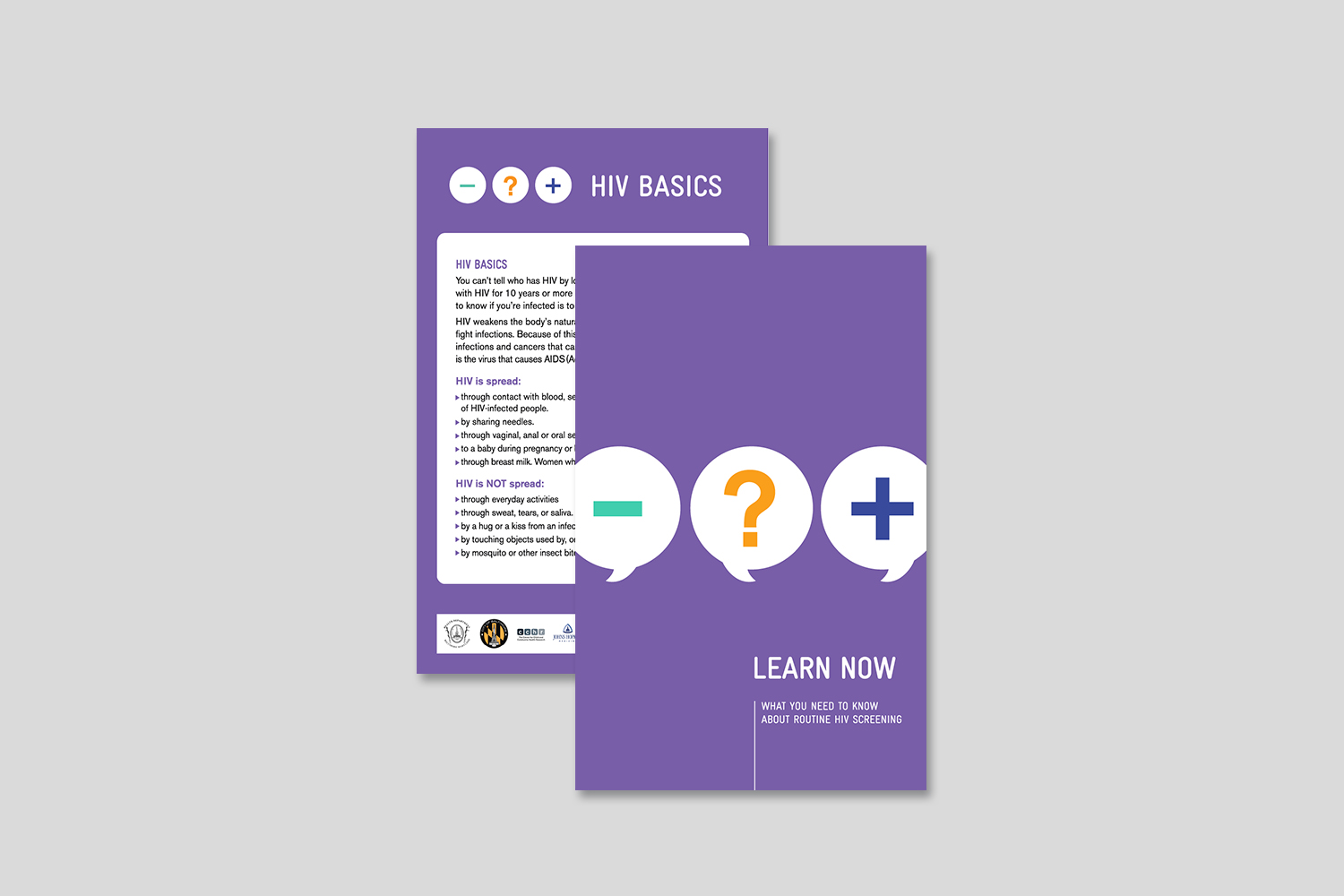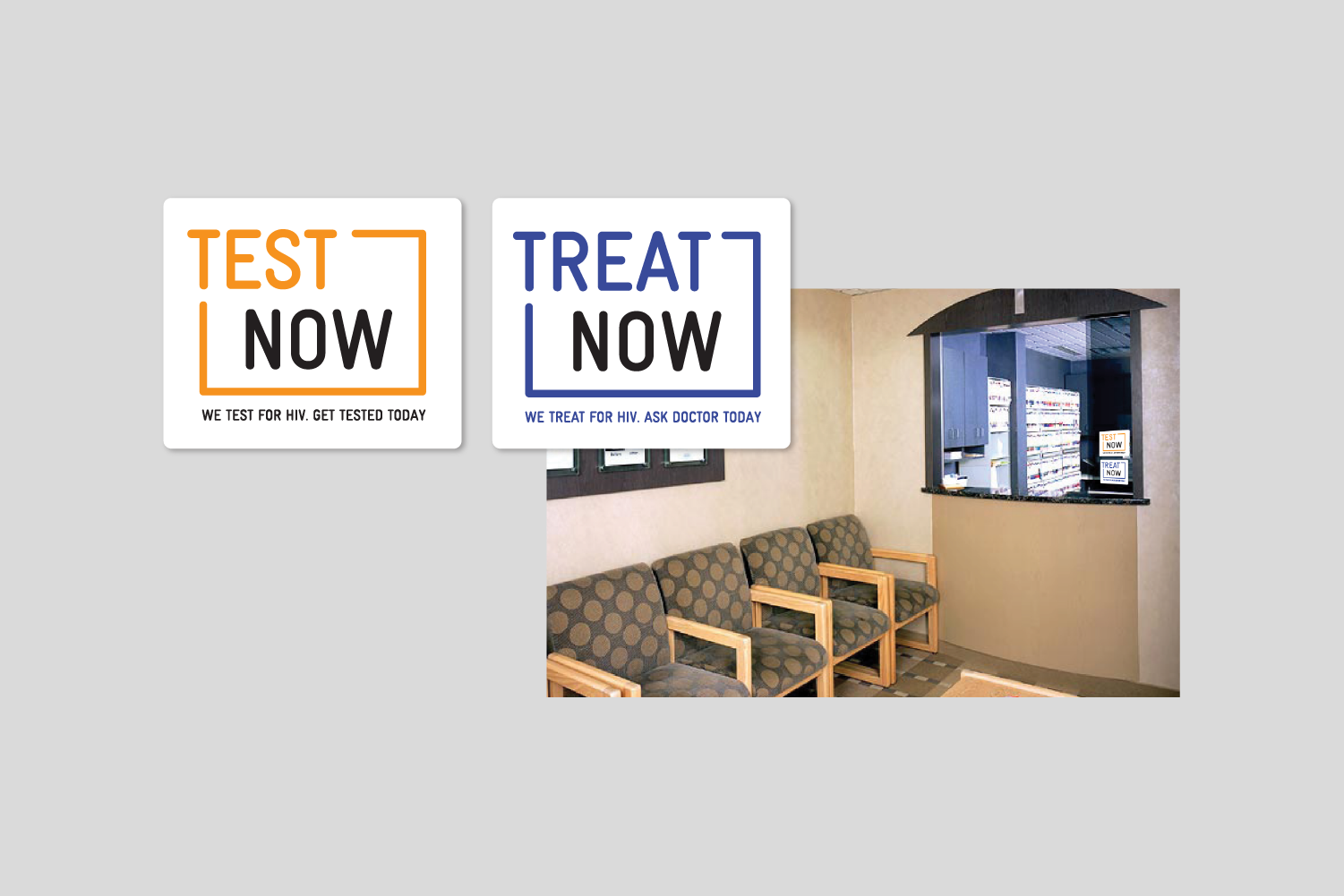
Protect Baltimore
Human Centered Design | Service Design | Branding
Johns Hopkins Center for Child and Community Health (CCCH) reached out to the team of designers at the Center for Design Practice at the Maryland Institute College of Art with the objective of reducing HIV transmission in Baltimore, Maryland by equipping healthcare providers.
In order to get a better sense of HIV epidemics in Baltimore—and to understand the challenges for the healthcare providers—the team spent time interviewing several healthcare providers and spending time at clinics, developing an HIV Glossary, and creating data visualizations.

By using methods of ethnographic research, design thinking, and rapid prototyping, the team developed a program called Protect Baltimore, an educational toolkit for healthcare professionals to promote and practice HIV testing in high-transmission areas of Baltimore city.
Protect Baltimore consists of an HIV Resource Manual for providers, patient information cards, provider/patient conversation tools, patient testing reminders, wall stickers for clinics, and promotional materials.

The Protect Baltimore mark is authoritative, yet friendly. It identifies toolkit materials and calls patients and providers to action.

A resource manual has complete information about testing for and treating HIV in Baltimore.



This two-sided “cheat sheet” is a small, handy resource that a care provider can use alongside the patient to talk about routine HIV testing. The pocket-sized format makes it easy for care providers to carry with them, and fits their busy lifestyle.

The cards and text messages will help patients remember to get tested regularly and keep future appointments. The text-message option integrates seamlessly into many patients' lifestyles.

The patient information brochure is a convenient take-away flier full of information about testing for and treating HIV in Baltimore. These are especially useful for patients without internet access, and serve to spark discussion with doctors. They are customized to include information for particular patient scenarios.

These vinyl decals are displayed in the waiting room of the provider’s office. They signify that the office is a testing location, treatment location, or participant in the Protect Baltimore campaign. The stickers also show that testing is a regular procedure at the practice.

Small, branded giveaway objects serve as a constant reminder in the office, and help publicize the campaign.

The poster has a large statistic that is meant to get the patient thinking about living in a community with a high incidence of HIV. It calls them to action with "Get tested today," while emphasizing that getting tested is not only a way to protect yourself, but to protect the city of Baltimore.

The project was developed at the Center for Design Practice under the supervision of Ryan Clifford, in collaboration with Jackie Littman (Design), Anne Marie Jasinowski, Andrew Calderwood, and Karen Shea (Research), and in partnership with Johns Hopkins Center for Child and Community Health (CCCH).
